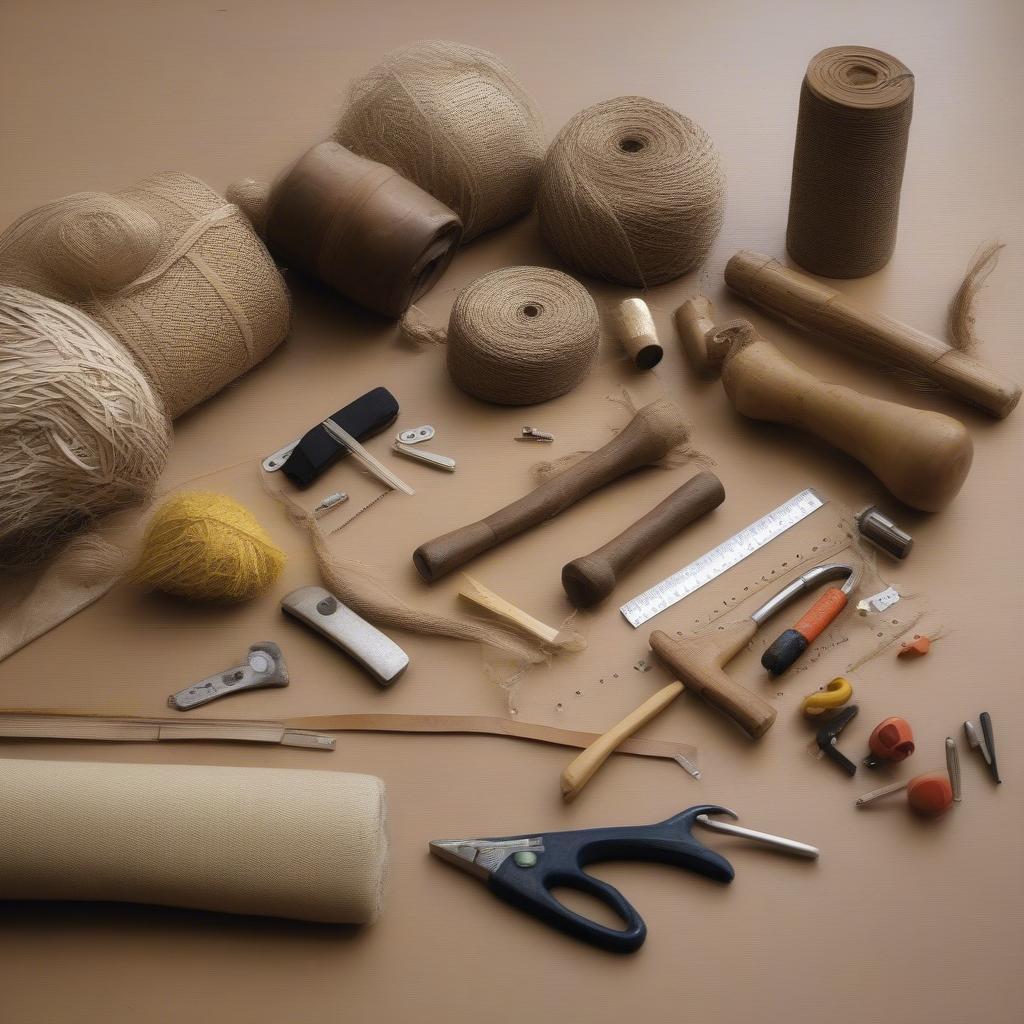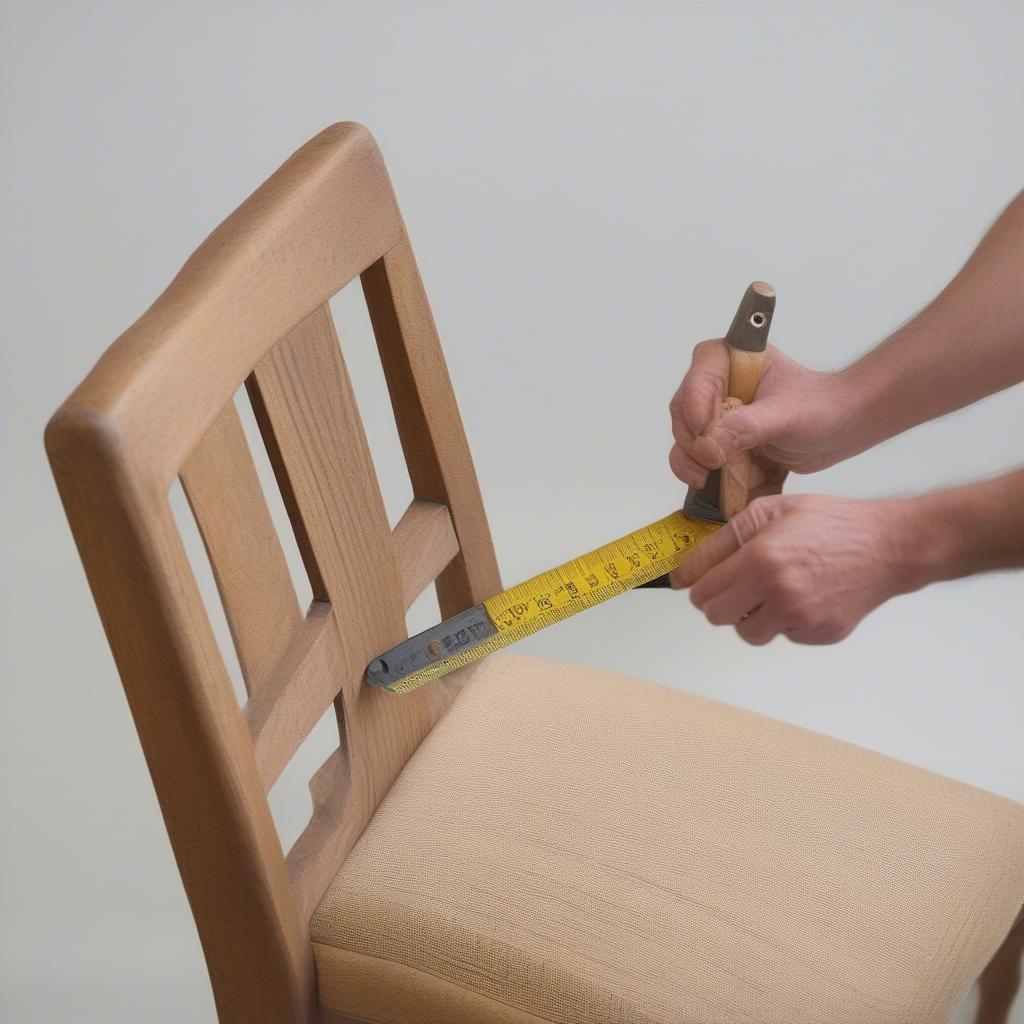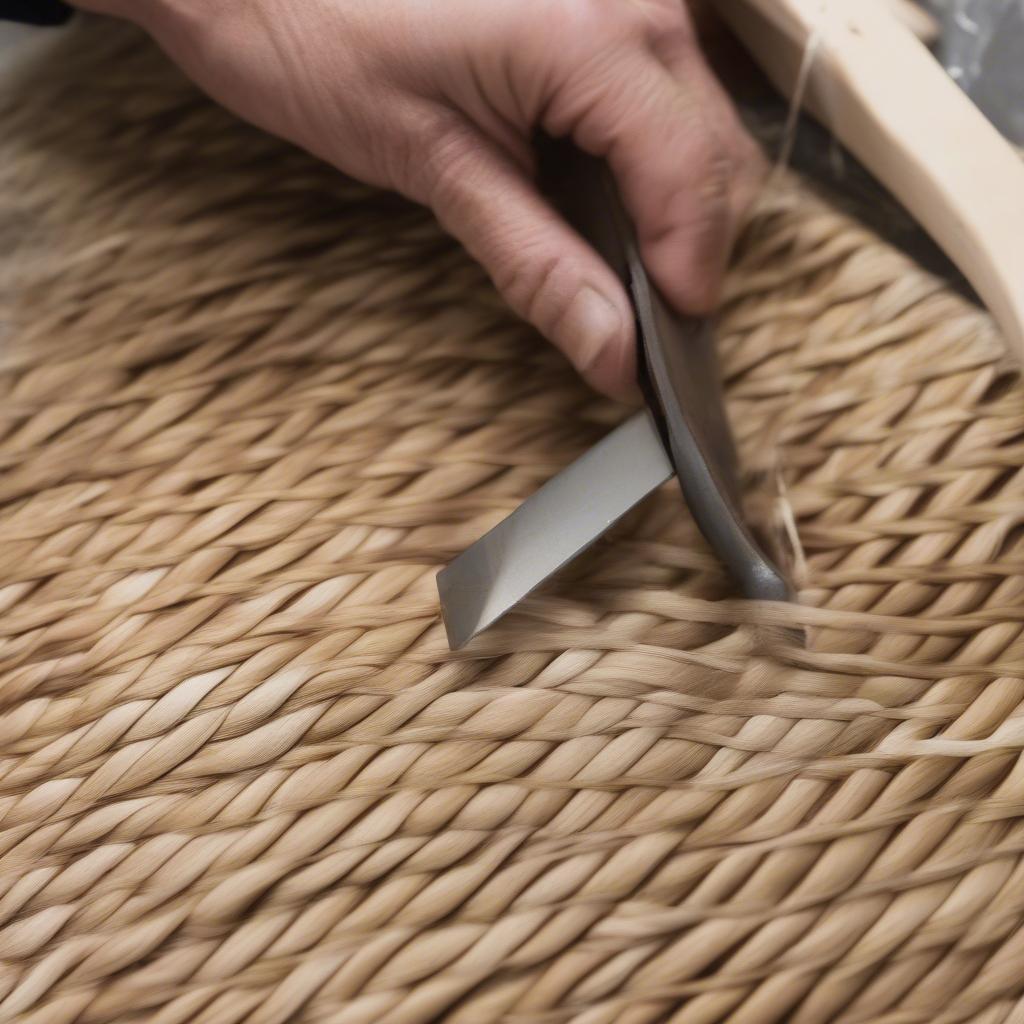Weave Chair
How to Weave a Cane Chair Back
Learning How To Weave A Cane Chair Back can be a rewarding experience, transforming a worn-out piece of furniture into a cherished possession. This guide will walk you through the process, providing tips and techniques to achieve a professional-looking result. Whether you’re a seasoned DIY enthusiast or a complete beginner, you’ll find valuable insights into this traditional craft. Let’s dive into the world of cane weaving and breathe new life into your furniture!
Preparing for Cane Weaving: Tools and Materials
Before you begin weaving a cane chair back, gathering the necessary tools and materials is crucial. You’ll need pre-woven cane webbing, a sharp utility knife, a measuring tape, tacks or staples, a hammer or staple gun, and a damp sponge. Having these items ready will streamline the process and ensure a smooth weaving experience.  Cane Weaving Tools and Materials
Cane Weaving Tools and Materials
Choosing the right type of cane is also essential. While this guide focuses on using pre-woven cane webbing for the chair back, understanding the different types of cane, such as hand-woven cane and binder cane, can broaden your knowledge and inform future projects. Check out our guide on how to weave a cane chair seat for more information on different cane types.
Measuring and Cutting the Cane Webbing
Accurate measurement is key to a successful cane weaving project. Measure the area of the chair back you intend to cover, adding a few inches extra on each side to allow for trimming. This excess ensures that the cane webbing is securely attached and won’t unravel during the weaving process.
Carefully cut the cane webbing to size using a sharp utility knife. A straight edge can help ensure a clean, precise cut. Remember, it’s always better to have a little extra cane than not enough. You can always trim away the excess later.  Measuring and Cutting Cane Webbing
Measuring and Cutting Cane Webbing
Attaching the Cane Webbing
Once the cane webbing is cut to size, dampen it with a sponge. This makes the cane more pliable and easier to work with, reducing the risk of splitting or cracking. Position the dampened cane webbing over the chair back frame, ensuring it’s centered and evenly distributed.
Secure the cane webbing to the frame using tacks or staples. Start by attaching the cane at the center points of each side, then work your way outwards, pulling the cane taut as you go. This prevents sagging and ensures a tight, even weave. Our article on chair cane caning seat weaving repair replacement kit provides more details on the tools and materials needed for attaching the cane.
Finishing Touches: Trimming and Securing
After the cane webbing is securely attached, trim the excess cane using a sharp utility knife. Be careful not to cut too close to the frame, leaving a small margin for a neat finish. For a more traditional look, consider using binder cane to cover the edges of the woven cane. This adds a decorative touch and provides extra reinforcement.
“Using binder cane is a great way to add a professional touch to your cane weaving project,” says renowned furniture restorer, Amelia Carter. “It not only enhances the aesthetic appeal but also adds an extra layer of durability.”
Troubleshooting Common Cane Weaving Issues
While cane weaving is relatively straightforward, a few common issues can arise. If the cane webbing splits or cracks, it may be too dry. Dampen it again with a sponge before continuing. If the weave appears uneven, check the tension of the cane. Ensure it’s pulled taut and evenly distributed across the frame.  Trimming and Securing Cane Webbing If you are working with split oak, our guide on how to weave split oak chair seat can be a valuable resource.
Trimming and Securing Cane Webbing If you are working with split oak, our guide on how to weave split oak chair seat can be a valuable resource.
Conclusion: Enjoying Your Newly Woven Chair Back
Learning how to weave a cane chair back can be a truly fulfilling experience. With patience and attention to detail, you can transform a worn-out chair into a beautiful, functional piece of furniture. By following these steps and utilizing the resources provided, you’ll be well on your way to mastering this traditional craft. Remember to explore our other guides on chair weaving techniques, such as how to weave a seat in a rush chair and old wood chair weave.
FAQs
- What type of cane is best for chair backs?
- How do I measure the chair back for cane webbing?
- How do I dampen the cane webbing without making it too wet?
- What should I do if the cane webbing splits while weaving?
- How do I achieve an even weave?
- What is binder cane and how do I use it?
- Where can I find more resources on cane weaving?
For further assistance, contact our 24/7 customer service team at +84 388 951 999 or visit us at Hanoi, Vietnam or Tech Avenue, Suite 12, San Francisco, CA 94105, USA.
